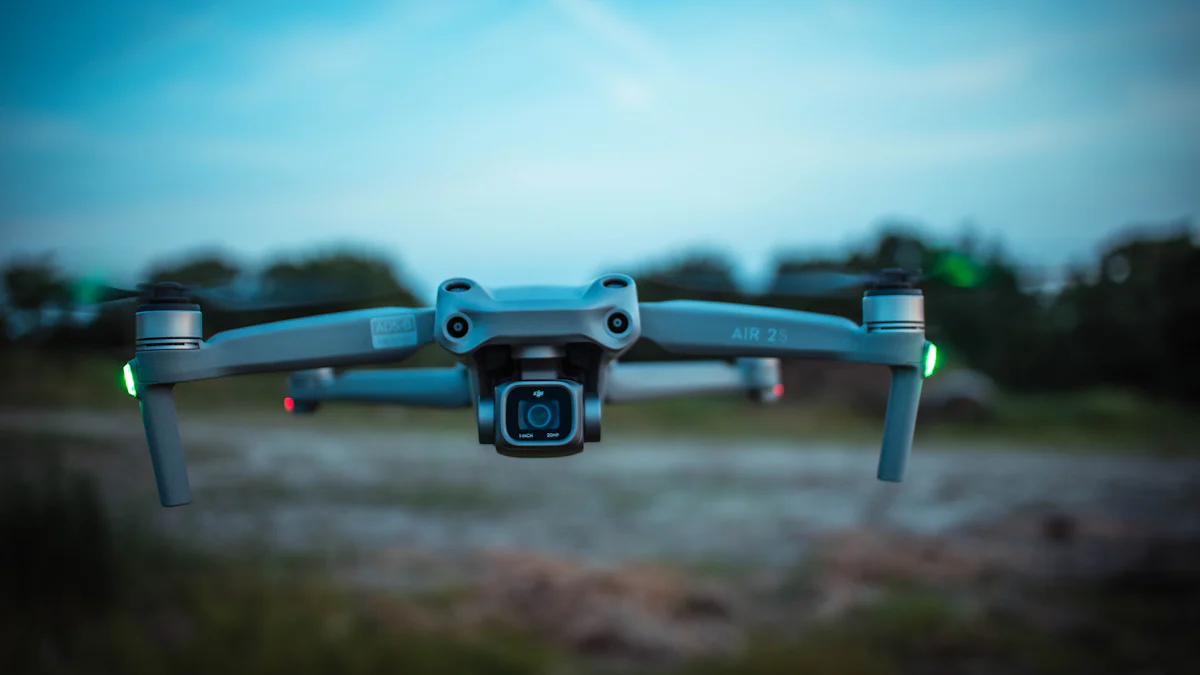2024 Guide: Drones with Thermal Imaging Camera - Top Picks & Features

2024 Guide: Drones with Thermal Imaging Camera
In the fast-evolving world of drone technology, thermal imaging cameras have become an indispensable feature for various applications. This comprehensive guide is designed to provide valuable insights into the best drones equipped with thermal imaging cameras. From professional-grade options to budget-friendly choices, discover the top picks and essential features to consider when choosing a thermal imaging drone. Moreover, delve into the diverse applications of thermal imaging drones, spanning from photography and videography to precision agriculture and environmental monitoring.
Tip: Thermal imaging drones offer a unique perspective and enhanced capabilities for a wide range of industries and activities.
Exploring Thermal Imaging Drones
Advancements in Thermal Imaging Technology
The evolution of thermal imaging technology in drone cameras has been nothing short of remarkable. Initially developed for military and surveillance purposes, thermal imaging has now made its way into the consumer and commercial drone market. The advancements in thermal imaging sensors and cameras have significantly improved their resolution, sensitivity, and overall performance, allowing for more detailed and accurate thermal imagery.
This technology has revolutionized various industries by providing a new level of insight and data collection. From identifying energy inefficiencies in buildings to locating missing persons during search and rescue operations, thermal imaging drones have expanded the possibilities for aerial data acquisition.
Benefits of Thermal Imaging in Drones
The advantages of using thermal imaging drones for photography and videography are substantial. They enable capturing stunning visuals even in low-light conditions or environments with minimal visibility. Additionally, the ability to detect heat variances makes them invaluable for wildlife monitoring and conservation efforts.
In agriculture and environmental monitoring, thermal imaging drones play a crucial role by providing farmers with essential data on crop health, irrigation management, and pest infestations. Moreover, they aid environmentalists in assessing vegetation health, detecting forest fires, and monitoring wildlife populations.
Top Picks for Thermal Imaging Drones
Professional Grade Thermal Imaging Drones
When considering professional-grade thermal imaging drones, several top picks stand out for their exceptional features and capabilities. These drones are designed to meet the demands of professional photographers, videographers, and professionals in various industries.
Comparing the capabilities of these leading professional-grade thermal imaging drone models can help users make an informed decision based on their specific requirements and budget.
Essential Features of Thermal Camera Drones
Key Features to Consider
When selecting a thermal camera drone, certain key features play a crucial role in determining its effectiveness and suitability for specific applications. Understanding these features is essential for making an informed decision when investing in a thermal imaging drone.
Thermal Resolution: The thermal resolution of a camera determines the level of detail and clarity in thermal images. Higher resolution allows for more precise temperature measurements and better identification of objects or subjects within the thermal imagery.
Image Enhancement Modes: Look for drones that offer various image enhancement modes such as white-hot, black-hot, and color palettes. These modes enhance the visibility of thermal details in different environments and conditions, providing flexibility in capturing thermal data.
Integration with Mapping Software: Drones that seamlessly integrate with mapping software enable the overlay of thermal data onto maps or 3D models. This feature is valuable for tasks like surveying, inspection, and creating comprehensive reports based on thermal findings.
Real-time Data Transmission: The ability to transmit real-time thermal data to ground stations or mobile devices is vital for immediate analysis and decision-making during missions or operations. It ensures that users can respond promptly to changing situations based on live thermal information.
Comparison of Thermal Imaging Technologies
The realm of thermal imaging technologies used in drone cameras encompasses various methodologies, each with its unique advantages and applications.
Uncooled vs. Cooled Thermal Cameras: Drones may utilize uncooled or cooled thermal cameras. Uncooled cameras are generally more affordable and suitable for short-range applications, while cooled cameras offer superior sensitivity and are ideal for long-range detection tasks.
Spectral Range: Different drone-mounted thermal cameras operate within specific spectral ranges, influencing their performance under different environmental conditions. Understanding the spectral range capabilities helps determine the suitability of a particular drone for intended applications.
Thermal Sensitivity: The sensitivity of a thermal camera dictates its ability to detect minimal temperature differences. Drones equipped with highly sensitive cameras can effectively capture subtle variations in temperature, which is crucial for many industrial and environmental monitoring tasks.
By comprehensively comparing these diverse technologies, users can make well-informed decisions when selecting a thermal imaging drone tailored to their specific needs.
Diverse Applications of Thermal Imaging Drones
Photography and Videography
Thermal imaging drones have revolutionized the landscape of photography and videography, offering a unique perspective and enhanced capabilities in various settings. These drones excel in capturing stunning visual content, especially in challenging conditions where traditional cameras may fall short. Whether it's for cinematography, wildlife documentaries, or artistic aerial photography, thermal drone cameras provide a new dimension of creativity and exploration.
Tip: "The use of thermal imaging drones has opened up exciting opportunities for photographers and filmmakers to capture breathtaking visuals from an entirely different vantage point."
In addition to capturing captivating visuals, thermal imaging drones have been instrumental in documentary filmmaking by providing unprecedented access to remote or hazardous locations. The ability to detect heat variances allows filmmakers to showcase the hidden dynamics of natural landscapes and wildlife behavior that would otherwise remain unseen.
Agricultural and Environmental Uses
The utilization of thermal imaging drones in precision agriculture has significantly transformed farming practices by enabling farmers to monitor crop health, irrigation efficiency, and pest infestations with unparalleled accuracy. By capturing thermal data from agricultural fields, these drones aid in identifying areas with inadequate water distribution or detecting anomalies that indicate potential crop diseases.
Tip: "The integration of thermal drone cameras in precision agriculture has empowered farmers with precise insights into their crops' well-being, ultimately enhancing productivity and sustainability."
Furthermore, environmentalists leverage the capabilities of thermal imaging drones for monitoring vegetation health, detecting forest fires at an early stage, and conducting wildlife population surveys. The invaluable data obtained through these applications contributes to informed decision-making processes aimed at preserving biodiversity and ecosystems.
2024 Guide: Drones with Thermal Imaging Camera
To sum up, this comprehensive guide offers valuable insights into the realm of thermal imaging drones. Whether you're interested in photography, agriculture, or other applications, this guide helps you discover top picks and features tailored to your specific needs. Armed with the knowledge gained from this guide, you can confidently make an informed decision when selecting a thermal imaging drone that aligns with your requirements.
Contact Us: iSun Digitech Limited Ms. Coco Huang E-mail: sales@iasun.cn WhatsApp/Wechat: +86 13510421923
See Also
The Benefits of Utilizing Thermal Imaging Camera in Field Gear for Drones with Thermal Camera
An In-Depth Manual to Thermal Drones: Features, Applications, and Technology
Grasping Thermal Imaging Drones: A Complete Handbook
Enhance Your Toyota Camry with a Thermal Imaging Camera for Improved Visibility
Contact Us: Ms. Coco Huang
E-mail: sales@iasun.cn
WhatsApp/Wechat: +86 13510421923

